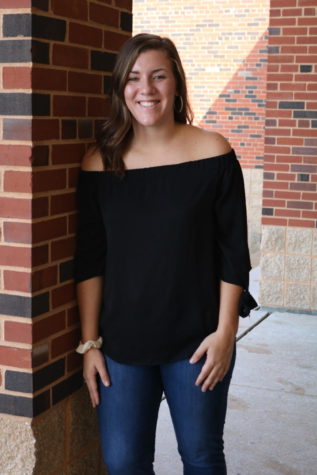October recognizes sensory processing disorder awareness
Life Skills classes have unique seating arrangement options available for those with sensory disorders. “Some have sound, some have sight, some have smell, some even have taste [sensory disorders],” special education paraprofessional Bonnie Rademacher said. The Life Skills classrooms do their best to benefit everyone who may have a sensory disorder, so mixing up seating options is just one way for them to help their students.
October is National Sensory Processing Awareness Month. Sensory processing disorders, also known as SPDs, affect one in 20 individuals, yet many people are unaware of what these disorders truly are.
According to the Star Institute, sensory processing disorders are neurological disorders where sensory information is perceived in abnormal ways, resulting in often inappropriate responses, and each person’s situation varies when it comes to SPDs.
“Some have sound, some have sight, some have smell, some even have taste [sensory disorders]. Each person is different, how they react. It affects each person differently, it depends on what sensory disorder they actually have,” special education paraprofessional Bonnie Rademacher said. “Different people react differently to different sensory issues. Some may just go into total meltdown, some will just shut down and some will totally clam up.”
As the reactions to perceived sensory information varies, so do the sensory triggers. There are actually eight sensory systems involved in SPDs, not the typical five senses most people think of. They include the visual, auditory, tactile, olfactory, gustatory, vestibular, proprioception and interoception sensory systems. Often, more than one sense is overwhelmed, misinterpreted or poorly detected when an individual has an SPD.
“It could be more than one sensory issue that’s bothering them at the time,” Rademacher said. “And one little sensory issue for one person could set off a whole chain reaction to the others.”
While SPDs are often seen in the special education community, they affect many individuals, regardless of gender, race, finances or academic abilities.
“We have regular ed kids that have sensory issues too,” Rademacher said. “I mean, I definitely have sensory issues. Smells really bother me.”
Even though SPDs are very common, there are many tips and lifestyle changes individuals can make to better their daily lives. The biggest tip for calming down during a sensory processing issue may just be the simplest solution of them all.
“It doesn’t matter what issue you have, just taking a nice deep breath really helps to clear your head,” Rademacher said. “That sounds so simple, just taking a deep breath, but you will be amazed.”
Although not everyone has an SPD, we all can do more to educate ourselves about those around us. Special education paraprofessionals often believe that best way to learn about those who face sensory processing disorders is often by interacting with them and getting to know them on a personal basis.
“With any special person, the more you’re around them, the more you’re going to get used to them, the more you’re going to get to know them and get to know their behaviors,” Rademacher said.
Furthermore, students at WHS have opportunities to get involved in various ways.
“We have Special Olympics, we have A+, we even have teacher’s assistant positions. We have two classes here now, middle school and high school [Life Skills]. We need help in art classes, and PE too. We’re always looking for helpers,” Rademacher said. “Just expose yourself to them, and you’ll get to know them.

Senior McKenzie Dohm has been writing for The Advocate for two years and is the current sports and photo editor. She enjoys photography, hiking, trying...


![Life Skills classes have unique seating arrangement options available for those with sensory disorders. "Some have sound, some have sight, some have smell, some even have taste [sensory disorders]," special education paraprofessional Bonnie Rademacher said. The Life Skills classrooms do their best to benefit everyone who may have a sensory disorder, so mixing up seating options is just one way for them to help their students.](https://WHSadvocateonline.com/wp-content/uploads/2018/10/Chair.png)



